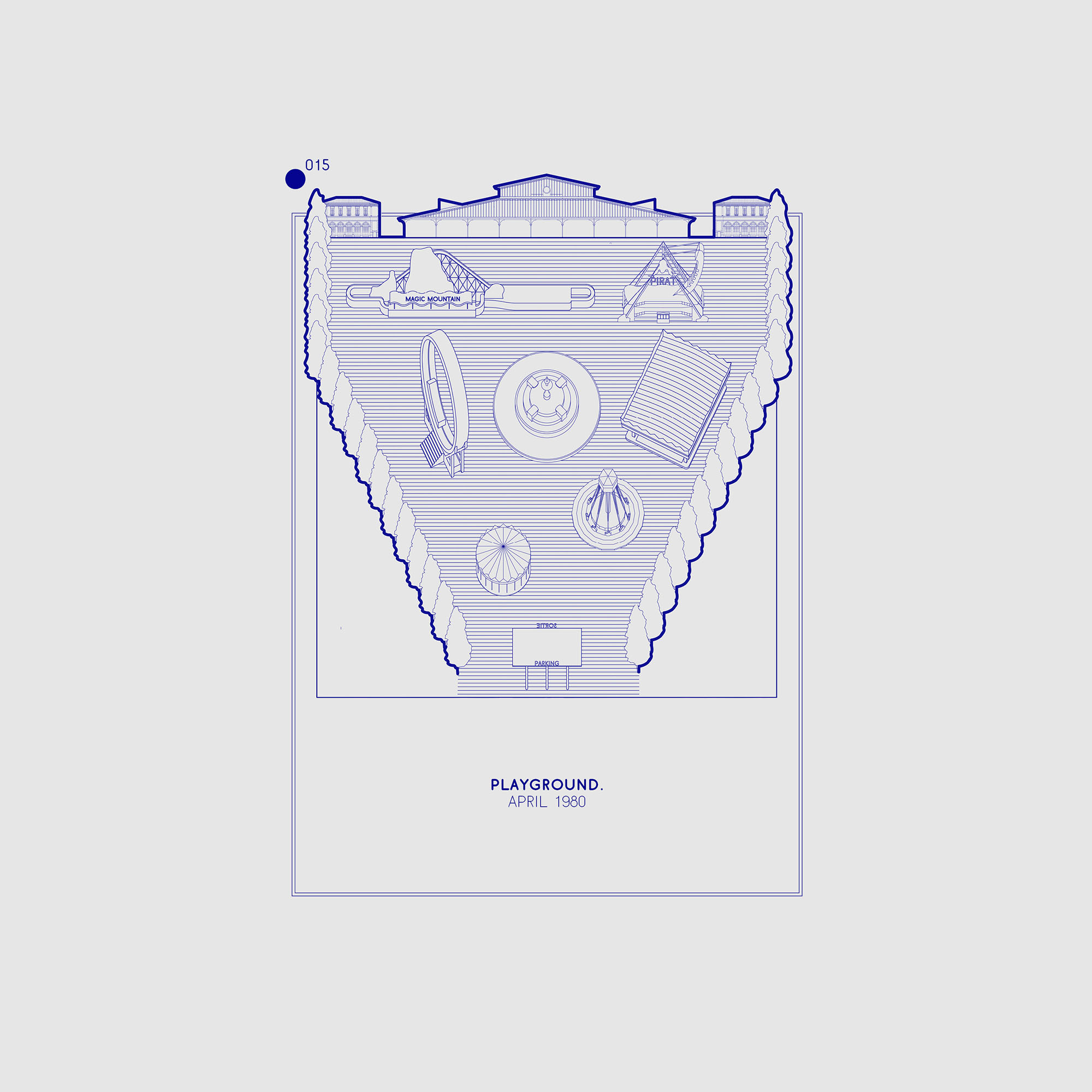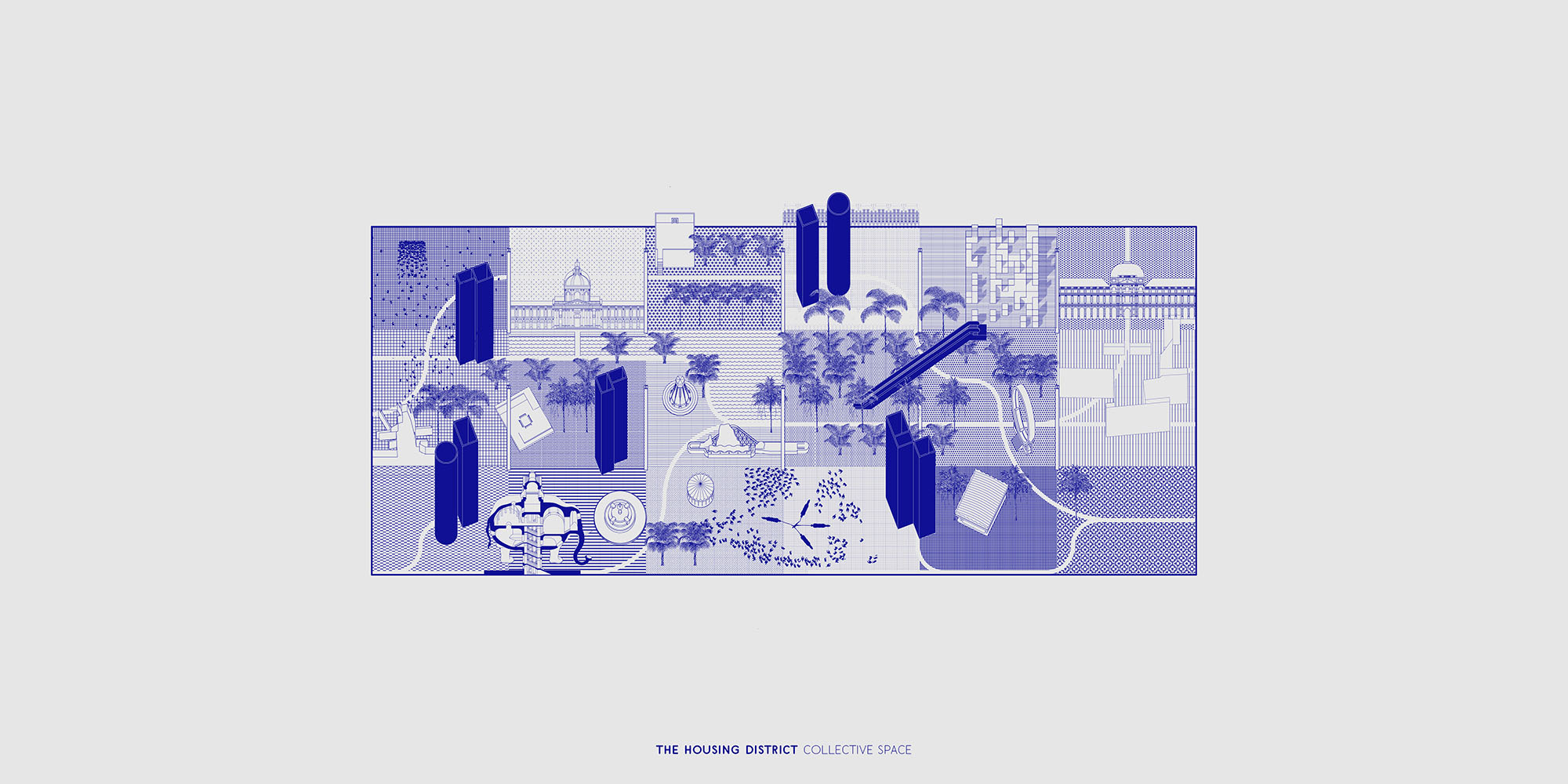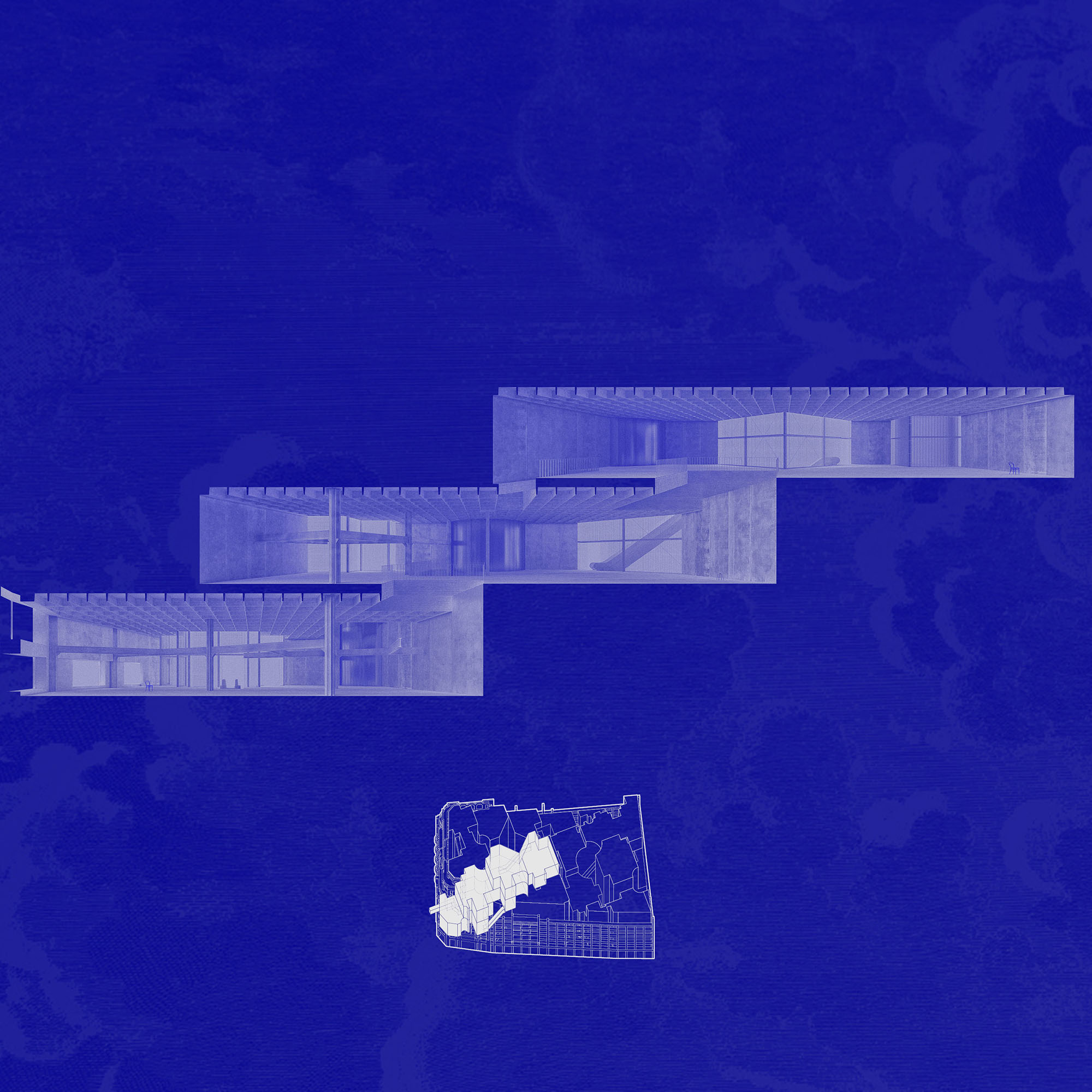The City of Perpetual Modernity
Abstract
Void Capital provides a template, an open source architectural blueprint for urban densification. The city naturally demolishes and preserves its built forms, to achieve a dense dynamic city. However, in the name of ‘history’, or ‘quality’, this natural re-actualisation process is discontinued. Void Capital reintroduces the historic centre of the European metropolis as City of Perpetual Modernity. Its tools are typologies of the city’s periphery, combined to create ever-new architectural arrangements. Implemented in Paris, the project renegotiates the typologies of the Grand Ensemble (the Housing District) and the Quartier d’Affaires (the Business District), both once positive icons of modernity, now fallen into despair.
Project video.
In an exciting Metropolis, density is desired. To ensure such a relevance to the present, the historical European city centres are condemned to perpetually reorganize and modernize their inherited built forms (Fig 1a-b). Paired demolition and preservation are part of the Sisyphean task (Fig 2).


Figure 1a-b.

Figure 2.
However, in the name of “history” or “quality”, this natural re-actualisation process is discontinued. The city seems be another version of an exclusive museum. La Samaritaine is built at the heart of historical Paris and of a rapidly changing neighborhood. Furthermore, the city offers the chance to renegotiate the unique dichotomy between the city’s periphery and center, itself constantly in need of further densification.
As Wallpaper* Magazine reported, Void Capital “proposes a template – an open source architectural blueprint – for urban densification” (Fig 3).

Figure 3.
Its tools are fundamental typologies of the city’s periphery. They are assembled on the same site, creating ever-new architectural arrangements.


Figure 4a-b.
Implemented in Paris, the project renegotiates the modernist typologies of: the Grand Ensemble (the Housing District) and the Quartier d’Affaires (the Business District), both once positive icons, now fallen into despair (Figure 4 a-b). La Samaritaine, a closed Parisian department store accommodates the two halves. Together, they form the Department City (Fig 5).

Figure 5.

Figure 6.
In the Housing District, the void is seen as a place where people meet (Fig 6). For the citizens, everyday life is shared between two areas: the individual cell (Fig 7) and the collective hedonistic retreat (Fig 8).

Figure 7.

Figure 8.
Here, extraordinary metropolitan rituals are performed: A changing repertoire of previously hidden urban practices, can now be shamelessly repeated countless times (Fig 9a-j). The architecture of the Housing District changes substantially only once in a century.









Figure 9a-j.
In the Business District, the void is seen as a tool which creates infrastructure (Fig 10).

Figure 10.
The district’s typical plan reflects an adaptable architectural device that evolves through time and various economic contexts (Fig 11).

Figure 11.
Future scenarios are based on La Samaritaine’s heteroclite transformations, put into perspective by individual site-specific analyses (Fig 12).
Figure 12.
The architect operates on a normative level: by simply accelerating or decelerating already ongoing urban phenomena. The district is organised in separate operational entities; the “Departments” (Fig 13).

Figure 13.
Programmatically unstable, the departments provide an architecture of minimal framework, flexible enough to perform unpredictable future uses, such as exciting urban arts, crafts and services (Fig 14).

Figure 14.
The form of the Business District is being subject to a change on an average pace of twenty years.
The Department City is an ephemeral scenario, rather than a finite project. Its blue color suggests conditions, rather than imposing solutions. It is a blueprint that when appropriated, it becomes an architecture about color, and life (Fig 15a-b).

Figure 15a.

Figure 15b.
Background
Void Capital is a graduation project about the European Metropolis. It is a part of a long-term research on the void in architecture, launched by its author during his studies at TU Delft. An essay on the theoretical framework of the project was published in San Rocco Magazine a year prior to the projects’ presentation. Currently, the project is shortlisted for the Archiprix NL award and preselected for the YTA Award by the Mies van der Rohe Foundation. Read Iason Stathatos’s interview on Koozarch (February 2018) about Void Capital.
References
Stathatos, I. (2016, summer). Le Vide: The Time Rem Failed to Seduce François. San Rocco, Clients (12).
Stathatos, I. (2016). Void Capital: The City of Perpetual Modernity. Retrieved from https://repository.tudelft.nl/islandora/object/uuid%3A87f2f314-b88c-4f82-95c3-c47b973bd5d5
Stathatos, I. (2018). Void Capital – The City of Perpetual Modernity @ Explore Lab, TU Delft, 2016. Retrieved from https://koozarch.com/2018/02/05/void-capital-the-city-of-perpetual-modernity/
Thorpe, H. (2018). Graduate directory: Architecture. Wallpaper. Retrieved from https://www.wallpaper.com/graduate-directory/2018/architecture#iason-stathatos